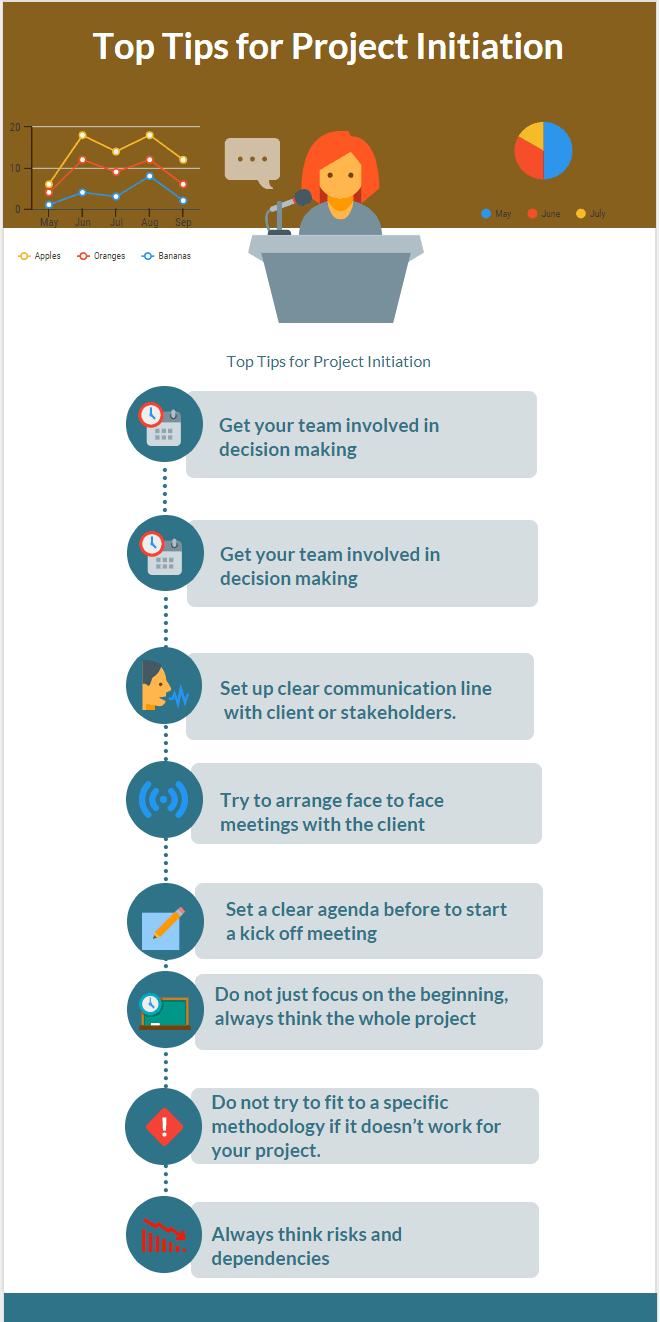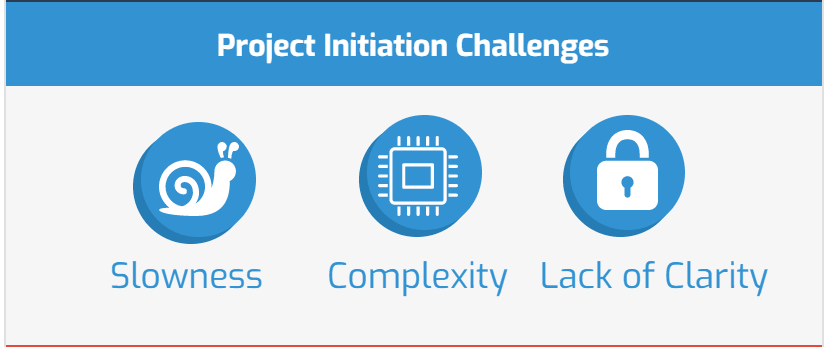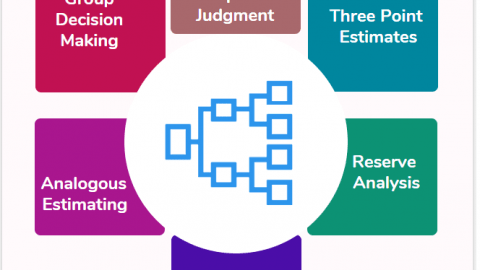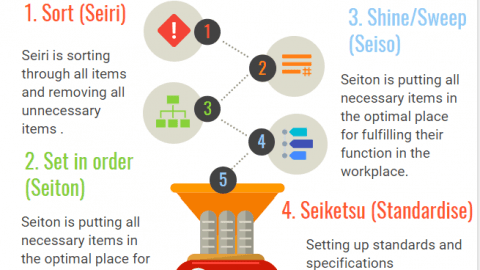A Short Guide to Project Initiation
The beginning period of a project requires hard effort and proper planning because most of the critical decisions are taken at this step. No matter how well you are at managing project resources and risks, you can not complete your project successfully without following the critical steps of project initiation. Typically, many tasks such as estimating resources, defining the scope, meeting with the client that shapes the future of your project are performed during the project initiation process. In this short guide, we will provide the tools and information you need to begin your projects in the right way and proceed successfully. Now let’s start with the core aspects of the project initiation phase and discuss the steps to prevent your project against challenges.
Table of Contents
What is Project Initiation?
Typically, every project has a beginning, an executing, and a closing phase.
The project initiation phase is the first phase in which the project is kicked off. It is a beginning phase in which you identify the project deliverables, objectives, stakeholders, and scope.
Project Initiation Document and the Statement of Work are the two outcomes of this phase. Generally, you create one of them but sometimes you need to create both.
Project Initiation Steps
During the project initiation, you need to manage people and focus on the process and the product. The below steps can be helpful to perform the project initiation steps successfully.
#1: Set Up Your Team
Firstly, you need to define and set up your team considering the project requirements and deliverables. Check the availability of the team members and think about the skills needed for them to perform the project.
Setting up the communication system is important at this step. You need to think about the communication lines between your team and the stakeholders and speak to discipline leads to understand their opinions.
#2: Get the Team Involved
Encourage your team members to involve in decision-making and gather team thoughts. They will have positive impacts if they feel more included and involved in decision-making. This will help you to gain a different point of view as the team members discuss.
#3: Define the Stakeholder Involvement
It is important to define internal and external stakeholder involvement and set the communication lines between your team and stakeholders for your project’s success. Because stakeholders are those who may affect or be affected by the project’s objectives. Therefore, defining stakeholder involvement for different phases of your project will help you to manage them actively.
#4: Decide the Methodology for a Successful Project Initiation
There are lots of methodologies available for project management such as agile and waterfall. Ideally, the best methodology is the one that suits the project best. Project teams often use a blended mix of different project management methodologies rather than choosing a single one. For example, methodologies such as Scrum, Kanban, Lean and Extreme Programming can be used in conjunction with Agile.
Before deciding the most suitable methodology, you need to consider the following;
- The size and complexity of the project
- The industry
- Scope, time, and budget
- Skills and availability of the project team members
Considering the requirements of your project, you can decide the most suitable methodology. For example, if the scope, duration, and budget are more clear, you can use Waterfall.
Don’t try to fit a specific methodology if it doesn’t work for your project.
#5: Decide the Tools to Use
Using the right tools depends on your project’s requirements and budget. Some clients necessitate using specific tools and software. Primavera P6, Microsoft Project, Microsoft Excel, and other useful software help you to make project planning and scheduling more effective.
There are too many software tools for communication and collaboration as well as planning software available on the market.
#6: Gather the Requirements of the Project
Requirements shape the project and the product. Therefore, you need to gather the below requirements during project initiation;
- Business requirements
- Client requirements
- User requirements
#7: Setting Deliverables
After gathering the requirements, you need to set the deliverables with your team. You can organize meetings with the discipline leads to clarify the deliverables.
#8: Estimating Budget and Duration
After setting the deliverables you need to estimate the budget and the duration. You should sit down with discipline leads to make proper estimations. Note that you will not make a detailed estimation but more an overview of phases of time.
#9: Creating the Success Measurement Criteria
At this step, you need to define the success measurement criteria of your project considering KPIs, client satisfaction, budget, and time performance.
What are the Challenges you May Face During the Project Initiation?
During the project initiation, you may face various challenges. Below are some of the most common ones.
1. Project Initiation Phase is Processing Slowly
In the beginning, the project initiation phase may take too long due to a lack of coordination between people. Although there are many things to be done, people feel relaxed and spend more time on small details. In that case, close communication and collaboration are needed to speed up things and remove the obstacles on the way.
2. Lack of Clarity
Lack of clarity is a major challenge, especially in the initiation phase. It causes confusion among team members about the project deliverables. In that case, you need to clarify the requirements of the project and the client by holding meetings and engaging discipline leads.
3. The Complexity of the Project
It may be difficult to perform project initiation steps in the right way for projects which are large, complex, and long-running. Because that type of project involves multiple phases that go in various directions.
Planning each phase separately and arranging mini kick-off meetings at each stage will help you to take the right decisions.
Tips for Project Initiation
Below tips may be helpful when initiating a project.
- Get your team involved
- Set up clear communication lines
- Try to arrange a face to face meeting with the client
- Set a clear agenda before starting a kickoff meeting
- Do not just focus on the beginning, always think the whole project
- Do not try to fit a specific methodology if it doesn’t work for your project.
Summary
The project initiation process is one of the most important processes for a project. If you don’t begin your project in the right way, you will face many challenges during the next phases.
Five PMBOK quotes about Project Initiation
Tim Cristini is a recognized thought-leader in Lean, Agile, Kanban, SAFe, Scrum, technical Agile practices, design patterns and emergent design. He is the CEO of NY FLEX Training












As stated in the article, involving team members and considering their opinions about the project are crucial for a project.